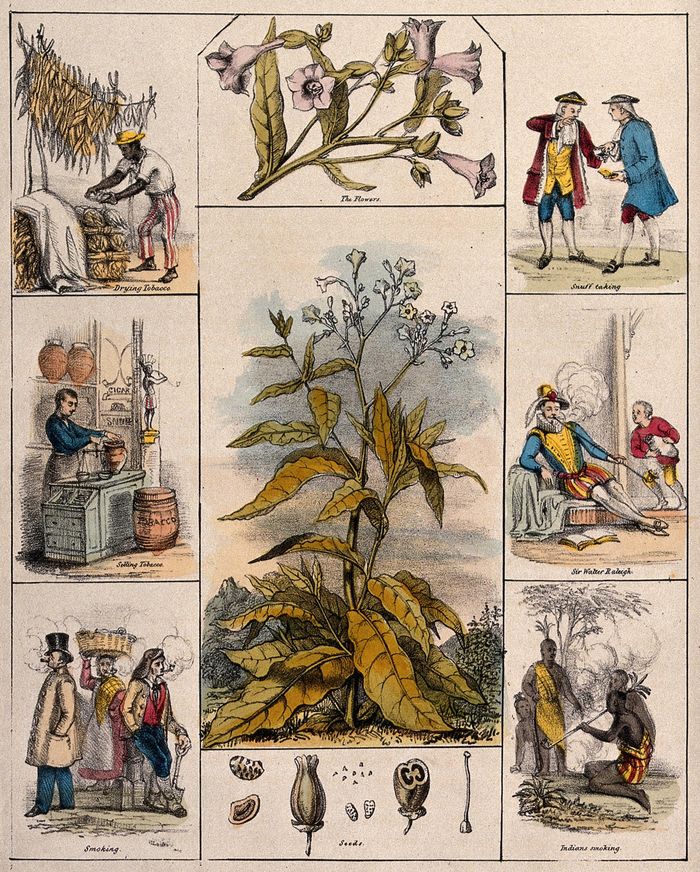Livescience
–
Archaeologists found charred tobacco seeds in the remains of fireplaces in the Great Salt Lake Desert in Utah, which are more than 12,000 years old. Here, Kelly McGuire is digging in the fireplace.
–
Nationalgeographic.co.id—Scorched seeds found in the Utah desert are living proof of use tobacco the earliest known to man, according to a new study, this evidence suggests that some of the first people to arrive in America used the plant.
“This discovery reveals that humans use tobacco nearly 10,000 years earlier than previously thought,” the researchers said.
Of all the intoxicating plants that humans use and abuse, tobacco arguably has the most critical social and economic impact, say the scientists in the new study. It often played a sacred, ceremonial or medical role among the ancient Mayans and other Native American groups, and it helped propel America’s colonial economy and thus Western expansion throughout the modern world.
Apart from smoking, chewing and inhaling, people have used tobacco in many different ways over the centuries. For example, ancient Mayan rituals sometimes used liquids containing intoxicating enemas of boiled liquids tobacco, and an 18th-century English physician gave drowning victims a smoke enema tobacco in an effort to save their lives.
To date, the earliest known evidence of the use of tobacco in humans is the nicotine found in pipe cigarettes in Alabama that is about 3,300 years old, according to research published in 2018 in Journal of Archaeological Science: Reports. Now, scientists have found signs that people were using tobacco about 9,000 years earlier than previously thought.
In the new study, archaeologists excavated the remains of a hunter-gatherer camp in the mud flats of the Great Salt Lake Desert in Utah.

WELCOME COLLECTION
–
The tobacco plant (Nicotiana tabacum), its flowers and seeds, is bordered by six scenes depicting its use by humans. Colored lithograph, circa 1840.
–
“Wind helped expose the site over time, said study lead author Daron Duke,” an archaeologist with the Far Western Anthropological Research Group in Henderson, Nevada.
Scientists identified the ancient hearth that was still intact and surrounded by stone artifacts, such as the tip of a spear used to hunt large game. The fireplace also contains more than 2,000 bones and bone fragments, most of them belonging to ducks, which have scars and other evidence suggesting that people there cooked and ate.
The fireplace kept scraps of charred willow wood which was probably the best choice of firewood in the area, as is common today in modern nearby areas. The researchers then analyzed the wood by carbon dating, which involves measuring the amount of a radioactive form of carbon with a known decay rate; the results show this wood is about 12,300 years old.
Inside the fireplace, scientists found the charred remains of four tobacco seeds. “Tobacco seed was an unexpected surprise,” Duke said Live Science.
While the researchers can’t say for sure how the people at this site used tobacco, they do say the seeds hint at the presence of nicotine-laden tobacco leaves and flowering stems. Perhaps people there chewed or inhaled tobacco smoke by the fireplace, the team said.
Scientists note that others may argue that tobacco is not used for its nicotine, but may come from the stomachs of ducks that eat it, or be used as fuel for burning. The researchers noted that birds do not eat tobacco, and that tobacco has no wood material so it burns too quickly to produce a fire of sufficient strength or duration for most cooking.
The findings suggest that people used tobacco for thousands of years before the unknown point in time where humans first domesticated the plant, Duke said.
Also Read: The Women Who Hold the Secret to Deli Tobacco Quality
“People in the past were major botanists and identified the intoxicating value of tobacco quickly after arriving in America,” Duke said.
Further research on these and other ancient sites with evidence of tobacco use could help explain the driving cultural forces behind tobacco’s subsequent cultivation, use, and domestication, the researchers said.
“We’ve been working to get input from indigenous peoples about the significance and importance of the discovery,” Duke said. “This will not only help us understand the findings for general scientific reasons, but also help us learn more about their value to people whose ancestors camped at the site and lived throughout the region. doing this science, so that we can understand the implications of various interests.”
Also Read: It turns out that there is one danger from vapors that many people don’t know about
PROMOTED CONTENT
Featured Videos
– .


